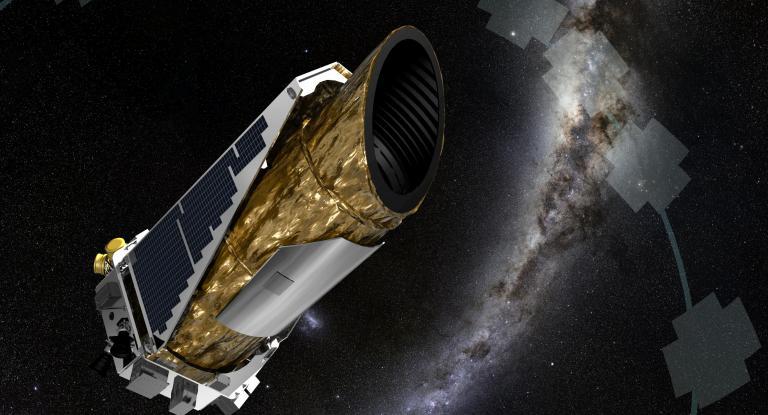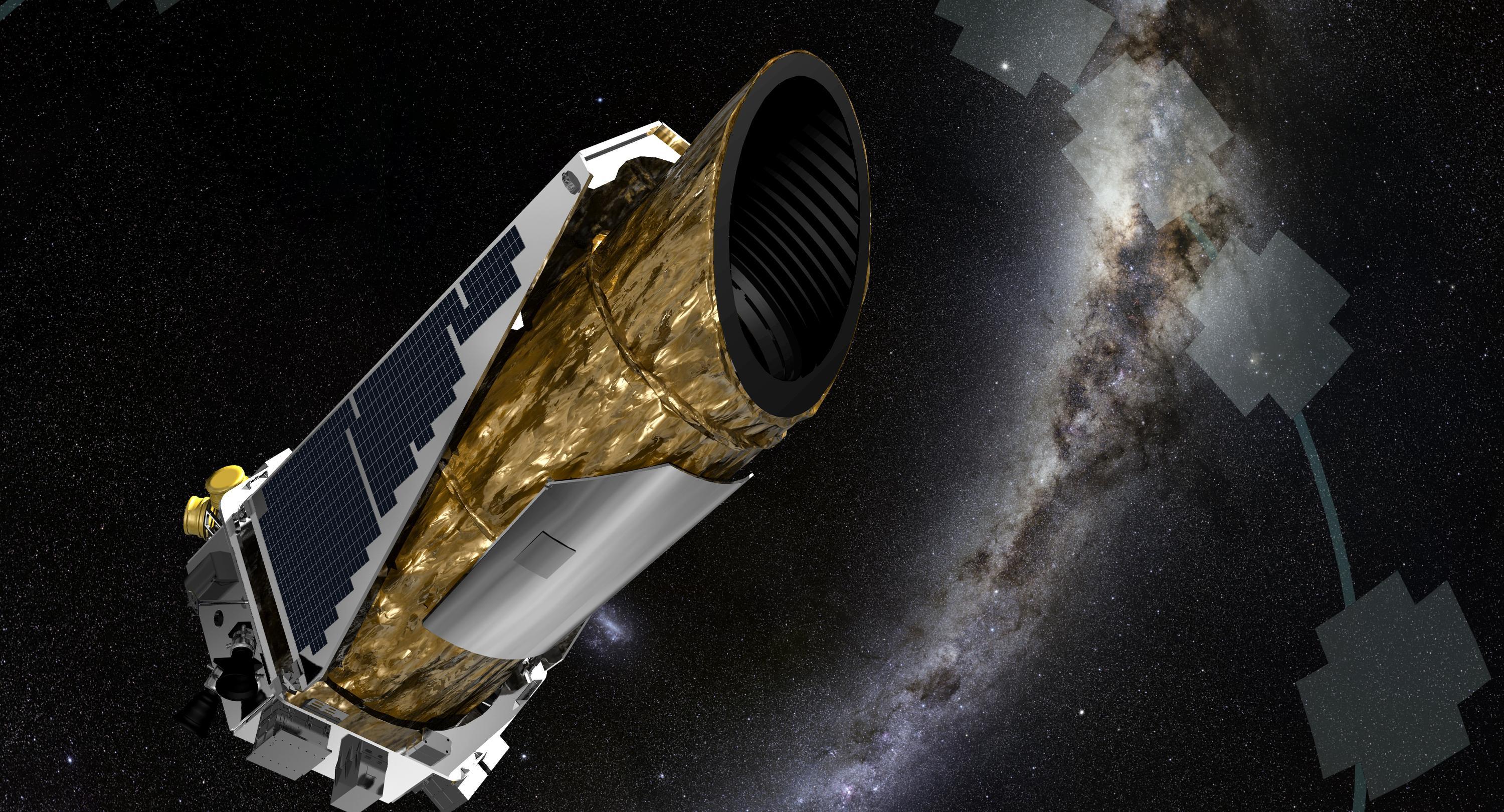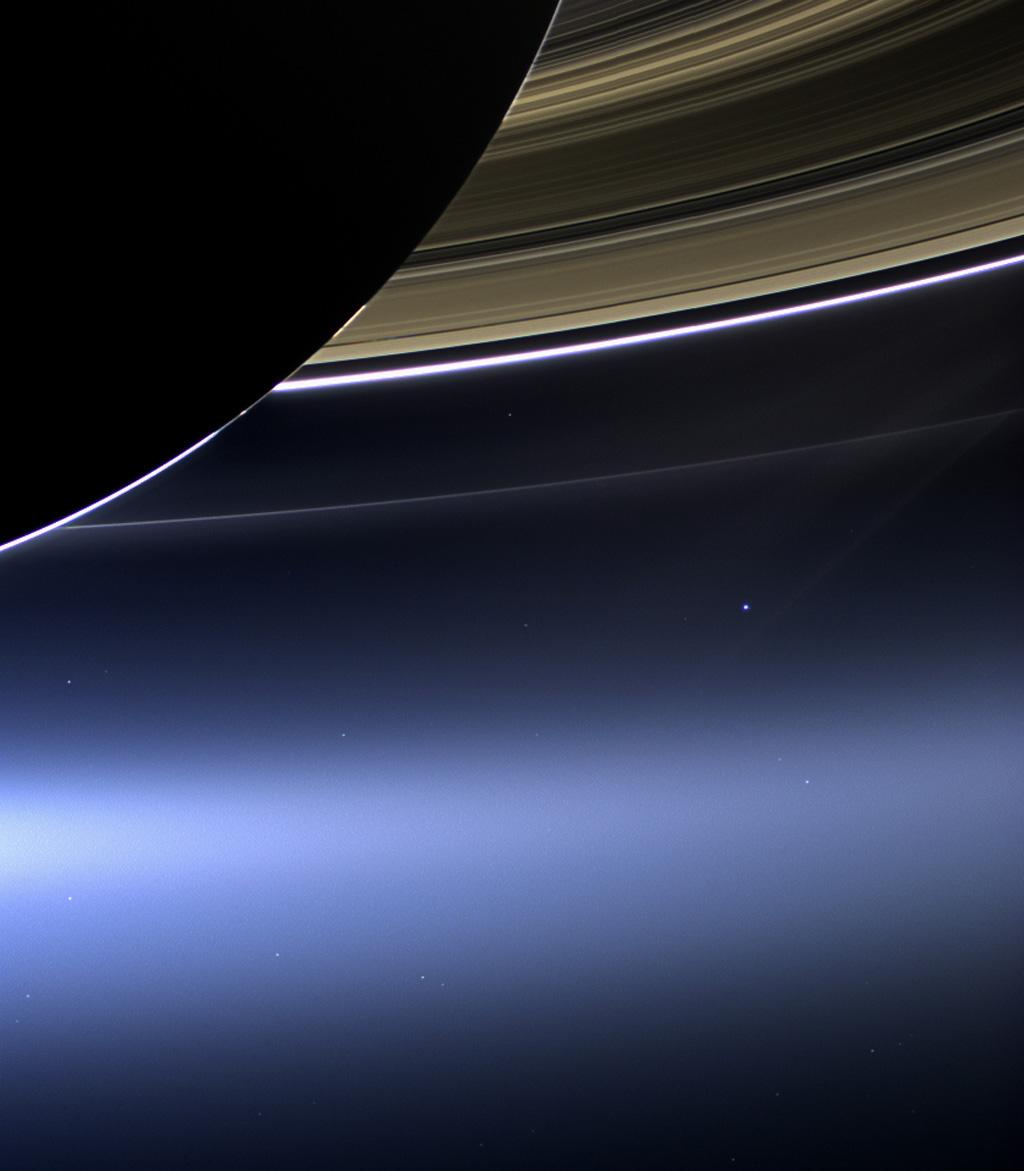 Outreach
OutreachWave at Kepler
NASA's hugely successful Kepler missing is getting close to the end of its life – but it's going to turn and look at Earth on 10 December and you could wave goodbye.
 Outreach
OutreachNASA's hugely successful Kepler missing is getting close to the end of its life – but it's going to turn and look at Earth on 10 December and you could wave goodbye.


Earth, centre right, from the Cassini spacecraft at Saturn
Image Credit: NASA/JPL-Caltech/Space Science Institute
NASA's hugely successful Kepler missing is getting close to the end of its life – but it's going to turn and look at Earth on 10 December and you could wave goodbye.
NASA's Kepler spacecraft has been extraordinarily successful at finding planets around other stars – 2515 at the time of writing – but it is running out of fuel, despite the new lease of life that is the K2 mission. Kepler's primary mission was to repeatedly image the same patch of sky in the constellations Cygnus and Lyra, looking for the slight dimming in the light of stars that indicated a planet passing in front. The results have been spectacular, with a whole host of exoplanets and explanatory systems identified, along with a few tens of Earth-sized planets in the habitable zones of their stars. When two of the four reaction wheels that kept Kepler pointing precisely failed, the K2 mission was born; Kepler points at different patches of sky in the plane of the solar system, for periods of 80 days at a time to avoid pointing at the Sun. The approach has been successful, finding 178 of those 2515 exoplanets.
But the full is likely to run out sometime in 2018, ending the mission. Before then, however, Kepler is going to point at the Earth and see how an inhabited planet looks to the Kepler imaging system. This is not really what Kepler was designed to do, but the few large pixels of the image may provide information about how the rotation of our planet affects the signal received, for example. And, on top of that, we can all wave for the picture!
While common sense tells us that there is no scientific point in waving at Kepler, it's seen as an outreach opportunity akin to the publicity campaign when the Cassini spacecraft looked back at Earth from Saturn: the day the Earth smiled. That image, taken on 19 July 2013, has echoes of the famous "Pale Blue Dot" image from the Voyager mission; both of them show Earth, its technology, culture and people, as just a few pixels, a bit brighter than the background. It's an updated version of those first images of the Earth from the Moon, when Apollo astronauts could block out the whole of the rest of humanity with their thumbs.
So, for 30 minutes on 10 December (depending on where you live) you can be part of what may become a historic image, symbolising the start of the exploration of exoplanets. The website Wave at Kepler has got more details, including details of where the spacecraft will be at the crucial time. The bad news for those of us in the UK is that it will be below the western horizon; you could wave anyway, but you won't contribute to those few pixels. But it's the thought that counts, and Kepler has given us a lot to think about.
If you would like to submit an article to A&G Forum then please go here.